On day 2 of my trip to the Pescadores, I drove north to the islands of Baisha and Xiyu, which are connected to Makung by bridges. It's kind of neat, so check it out on a map; the bridge between Baisha and Xiyu is one of the longest in the world.
澎湖諸島の旅、二日目だ!この日私はバイクに乗って馬公の北に位置する白砂島と西嶼島に行ってみた。白砂と西嶼を繫げる橋はかなり長い。地図で見てみてね。
澎湖旅行第二天!這天我去馬公北方的白沙島和西嶼島。在西嶼跟白沙中間的橋非常長、所以也算是觀光地。
I was blessed with beautiful weather every day I was on the islands. A typhoon actually came through Taiwan right after I left, so I felt particularly lucky to have dodged that bullet.
我離開澎湖之後颱風到臺灣來了。但是我很有幸運、在澎湖每天青天。
澎湖にいた五日間はずっと天気が良くて、本当にラッキーだった。
Hey, buddy, you forgot your boat.
これは馬公と白砂の間の橋だ。
Here we are on a bridge. I think it must be the one between Makung and Baisha.
Bugs! Yeah!
The entrance to the bridge between Baisha and Xiyu. Since it's super long, they make a big deal out of it and it has a fancy arch entrance.
下のアーチは白砂と西嶼の間の大橋の入り口に成っている。めっちゃ長いからこう言う風に観光地にされている。
這是從白沙到西嶼的大橋。
Also, since the bridge is super long, like many major public places throughout Taiwan, it has a statue of Chiang Kai-Shek.
また、大橋の入り口の近くに蒋介石の銅像も置いてある。以前、台湾の至る所まで蒋介石の銅像が有った。最近は少なく成っているが、まだまだ多い。
It looks like he's taking a leak if you take a photo from behind. There's even a piss stream coming down between his legs. I think a statue of Chiang Kai-Shek taking a piss on Taiwanese soil is pretty appropriate really, so congratulations to the artist who made this.
後ろから見たら、小便している様に見えて、杖が尿流に見える。
在尿尿的蔣界石。
Here's another cairn. Like I said in the last post, there are a bunch of these on the islands, but I forget what they mean. (I actually feel like kind of a moron. I'm realizing as I write up these posts that I have forgotten a lot of the details of this trip already. Don't wait a month to do something when you could do it right away instead is the lesson.)
前のポストにも載せたけど、こういう石塚が澎湖には沢山有るみたいだ。
澎湖有很多礧、可是我忘記了它們有甚麼意思。
A painting of a diver on a local fishing building.
地元の漁業関係の建物に海女の絵が描かれている。
I'm a creep, so I took a picture of someone's grave. (below)
ちょっと変わったお墓だ。椅子みたいな形は普通だけど、真ん中の石塔は始めて見た。
I think the Pescadores are famous for these flowers. That's what someone said to me. I don't remember what they are though. Oops.
最初に行ったのは西嶼の西端に有る灯台だ。泊まっている馬公から一番離れているので、先にそこに行って、帰り途中で他のところに寄ってみた方がいいと思ったのだ。灯台への道にこの可愛い灯台君が手で行方を指していた。
And here's out first stop! I drove mostly non-stop to the end of Xiyu Island so that I could see the lighthouse there. I figured it was better to see the stuff farthest away first and to stop at other places on the way back. (Uh, by the way, that's not the actual lighthouse in the photo below, you do realize, right? That's just an adorable lighthouse-man who's showing us which way to go to get to the actual lighthouse.)
到了燈塔!
Another creepy grave photo.
I see something!
灯台に着いた!
灯台の隣りに基地が有った。基地は駐車場と灯台の間に有って、駐車場でも、灯台辺りでも写真を撮っても問題は無いのに、灯台に行っている途中、基地を通っている時は、撮影禁止に成っている。意味が良く分からない。灯台に着いて、高いところに乗って基地の方を向いて写真を撮ったら、完全に基地の写真が撮れる。軍隊秘密の有る場所だったら、観光地にするな!
在燈塔旁邊有基地。進入禁止!
So apparently, right next to the lighthouse is some sort of military base with radar/communications towers and all of that. You actually have to walk on a path that goes kind of right through the base to get to the lighthouse, so there are all these signs warning you not to take photos, which is silly since you can take them at the entrance, and you can take them once you get to the lighthouse, even if you are looking back towards the base. Worst secret base ever, guys.
The lighthouse!
灯台と邪魔なお姉さん達。
A map of lighthouses in Taiwan. Also, a map of my future trips around the islands.
物干網。もしかして兵士が使っているかも。
Clotheslines
兵士の(?)シャツとパンツ。
誰的?說不定是軍人的呢?
Some guy's shirt and underwear.
A photo looking back at where we came from. The TOP SECRET military base is in the background. (Don't arrest me!)
這個墓碑在門的外面、所以不能靠近看好了。我不知道是誰的、為何在這裡。
A grave. This was outside a gate, so I couldn't get any closer to get a good look at it.
このお墓は閉じた門の外に有ったため、近付く事は出来なかった。誰のお墓なのだろうかな?しかも、基督教の。
These stone gourd things are all over the Pescadores. I'm sure they have some significance.
在澎湖我看到很多石頭的葫蘆。
ウンコ。
じゃなくて、瓢箪だと思う。澎湖のあっちこっちで瓢箪を見掛けたけど、澎湖では何かの特別な意味が有るかもしれない。
ほら、めっちゃ基地が見えるだろう?どこが撮影禁止なのか?
Surprisingly fancy bannister on the staircase
燈塔和旁邊的基地。
太陽に向いて写真を撮ったら、こう成った。
Oh no! What happened!? (I think I pointed the camera at the sun.)
我拍了太陽、拍得這樣子。
Yeah, that's better!
白色的旗幟應該是軍隊的吧。
赤い旗は皆さんが知っている筈の台湾国旗だ。(厳密言えば、中華民国の国旗だけど。)白いのは何かはっきり分からないけど、基地が有るから、多分何か軍隊関係の旗だと思う。
I think the white flag must be some military-related flag.
灯台の近くに下の写真のコンクリートで出来た大砲が有った。最初はなんでこんなところにこんな変な物が置いてあるかなと思ったけど、近くに有った看板を見てみたら、これは日本軍がアメリカ軍を騙す為に建てた物だと分かって来た。
The next stop after the lighthouse was nearby in a field in the middle of nowhere. There was this giant, concrete gun turret. At first I mistakenly thought it was some local politician's desperate and stupid idea to increase tourism in the area, but after reading the sign nearby, I learned that this is actually from the Japanese period. During the war, the Japanese military built this concrete gun turret to try to fool the American planes.
這個東西是日本軍為了騙美軍做的。當然不是真的大砲。
The plant life on the Pescadores reminds me a bit of the Austin, Texas area, where I have some family. It's probably a pretty superficial resemblance, but it's the only reference I have since I grew up in a place that gets snow just about every winter.
因為仙人掌多、所以我想起來我家人住的德州。澎湖應該下雨下得多、可是因為島是珊瑚礁做的、所以應該雨水不停在土裡、就流到海裡沒有了。我知道沖繩也是這樣子。
澎湖は沖縄の南部や宮古島などと同じく、珊瑚礁で出来た島だから、水保ちが悪い。雨が沢山降るにもかかわらず、結構乾燥していて、木があまり生えていない。私の親戚が住んでいるテキサスを思い出す。
次に行ったところは「西嶼東台」と「西嶼西台」と言う砦だ。この砦は清朝とフランスの間の戦争の後で建てられた。日本時代までは使われて、もしかしてその後中華民国軍も使ったかもしれない。
The next stop was at these old forts, still on the island of Xiyu. These forts were originally built during the Qing period, and were built in reaction to the war between the Qing and France(!) for control of Taiwan. They were still around during the Japanese period where they would have seen use since the Pescadores Islands were an important, strategic military location for the Japanese navy.
我也去西嶼東台和西嶼西台看看。它們本來是跟法國打仗了之後清朝做的。
ウンコ門(西嶼東台の大門)
東台大門。葫蘆在上面。
Another gourd on top of the gate to the Xiyu East Fort. (Constructed 1887)
The Xiyu East Fort was the more aesthetically impressive of the two. (The other being Xiyu West Fort.) It's got these beautiful, smooth, white walls with a million entrances you can climb around inside.
台湾、いや東アジアと思わないぐらい変わった様子の砦だ。
Probably the location of a cannon.
Inside, it looks like this.
也可以進裡面去。
砦の中。
There were lots of bugs living inside.
蜂も蜘蛛も多かった。
上記の写真は間違いない東台だけど、下記の写真は西台かどうかはっきり分からない。訪れた時は西台だと思ったけど、後でインターネットで調べてみたら、自分の写真とウェブに有る写真の様子があまりにも変わっていて、もしかして西台には行っていないかもしれないと思ってきた。とにかく何かの廃棄された基地だけど、名前は確実に分からない。
I believe that the photos following are of the Xiyu West Fort, which I'm pretty sure I also visited. I'm just confused because they look nothing like the photos I found online of it. It could just be that the angles are different and I'm not recognizing it, or it could be that this military installation is a more modern one that was inserted in between Xiyu West and East Forts, and maybe I never even made it to Xiyu West Fort and didn't realize it. Sorry for my continued ignorance.當時我覺得我去西嶼西台。可是後來我看看網路、再覺得也許我去的地方總算不是西台。是因為我拍的照片跟在網路看到的照片不一樣。所以下面的照片是一個基地、可是我不知道算不算是西嶼西台。
Greek Orthodox crosses?
Decay! Beautiful decay!
コンクリートで埋まった便器は生活感を漂わせて呉れる。
Concrete-filled toilets. (They're Asian squat-style toilets.)
An old guy was burning leaves and branches here. I assume he was hired by the local government to clear the area of brush, but maybe he just likes burning stuff.
一個歐吉桑把草木燃燒著。可能是這裡的管理人?
私の経験上では、日本でも台湾でもおじさん達は草木を燃やすのが好きみたいだ。ここにも燃やしているおじさんがいて、多分この古跡の管理人だと思うけど、単に草木を燃やす趣味が有る地元のおじさんに過ぎないという可能性も有る。
Originally a container to hold sand to put out fires, this concrete thing has become a planter. (below)
このギリシア正教十字架みたいな物は何なんだろう?
二日目の写真はまだいっぱい有るので、ここで一旦止めて、今回続く。
Day 2 isn't done yet, but I'll continue in another post since I took an absurd number of photos on this day.
因為還有蠻多照片、所以今天只到這裡。下次我再要貼。














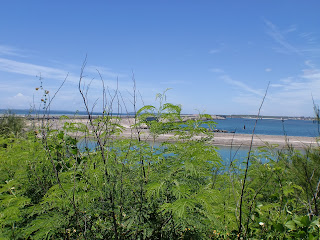





















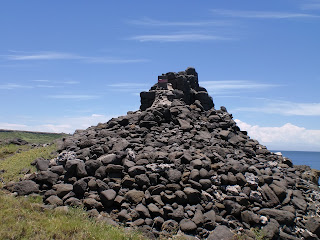







































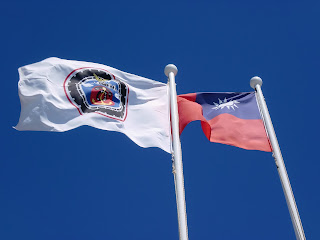





































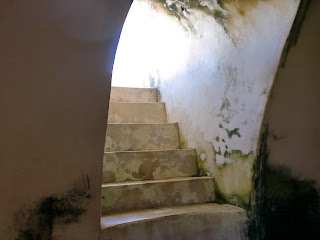




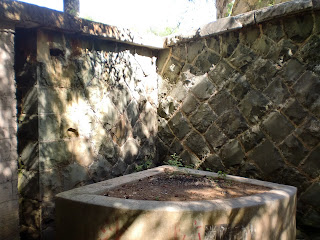




















































No comments:
Post a Comment